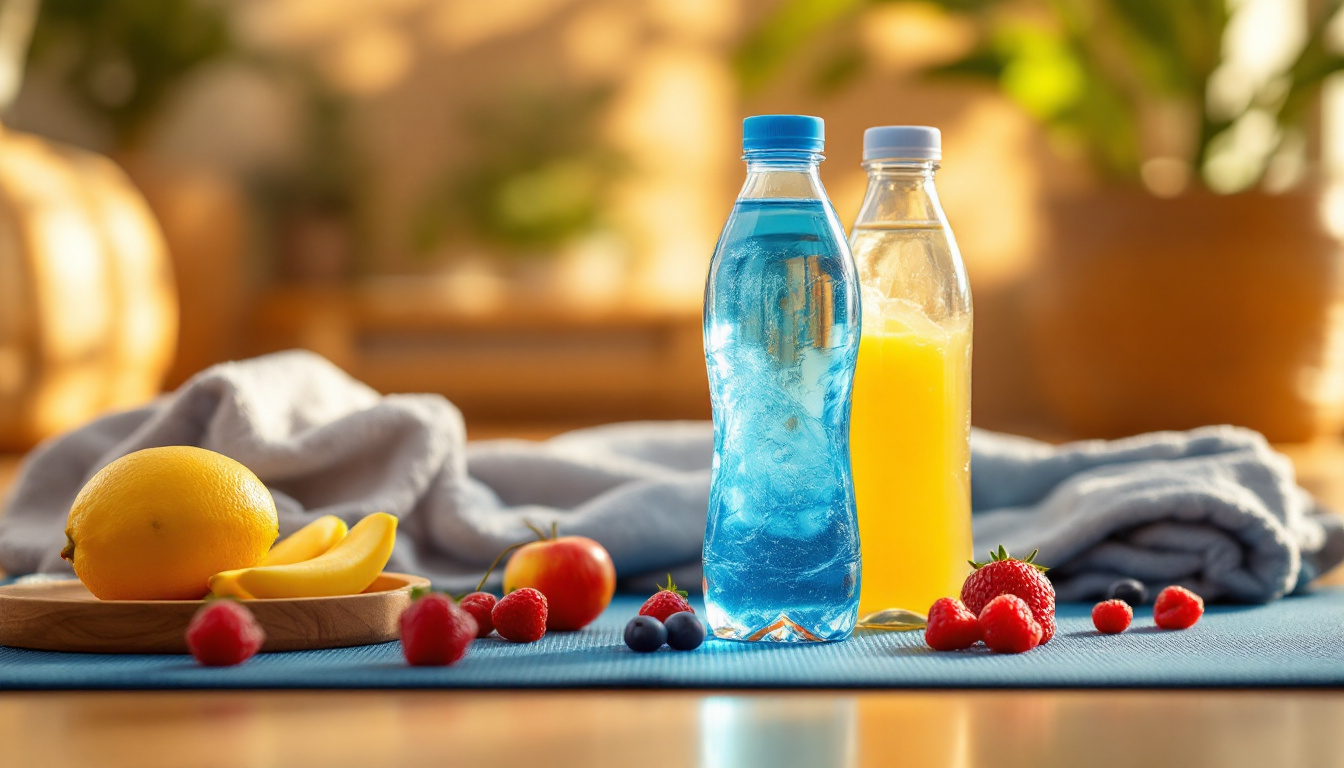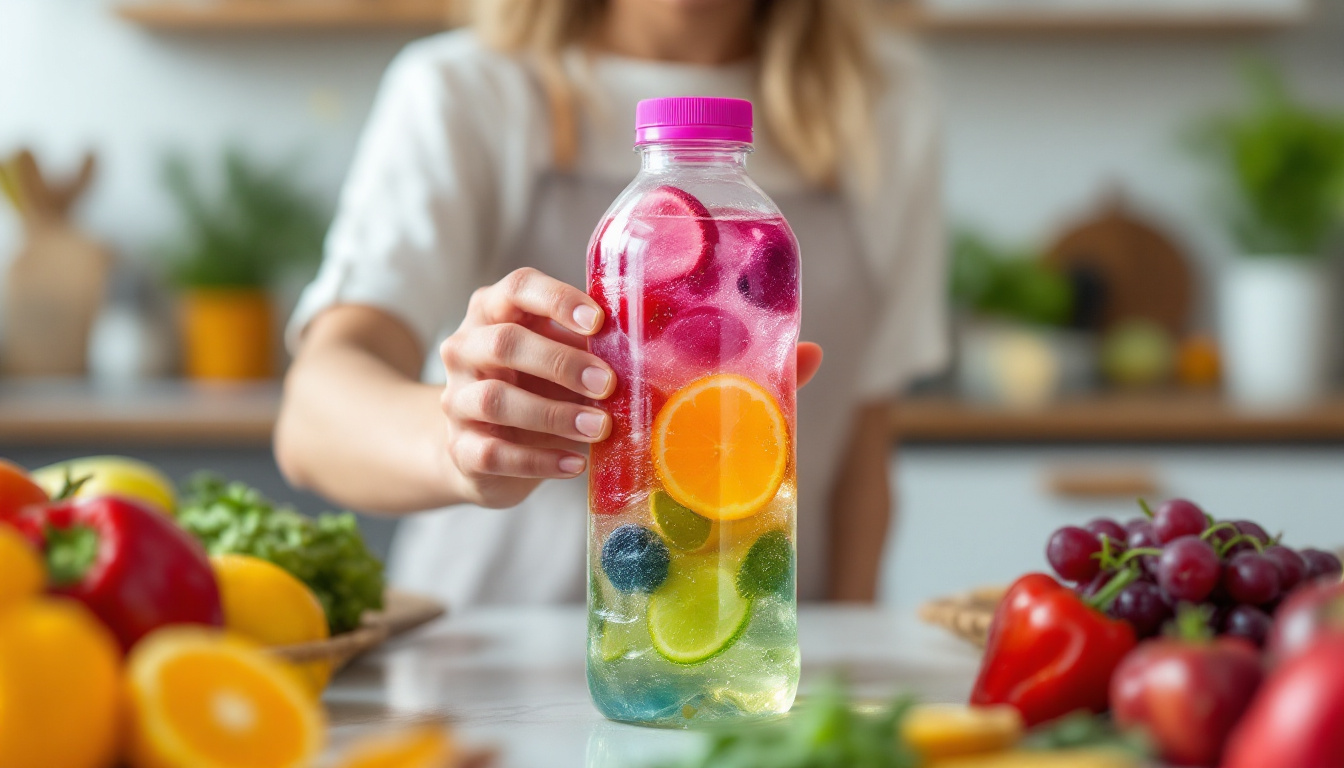When it comes to maintaining optimal hydration during intense physical activities like workouts, hot yoga, and sauna sessions, the balance of water and electrolytes is crucial. While the importance of staying hydrated is widely acknowledged, the specifics of how much water and electrolytes one needs can often be overlooked. Let's delve into the details of hydration strategies that can enhance your performance and recovery.
The Role of Hydration in Physical Activities
Hydration is not just about quenching thirst; it plays a pivotal role in maintaining bodily functions, especially during physical exertion. The body's demand for water increases significantly during activities that induce sweating, such as workouts, hot yoga, and sauna sessions. Proper hydration supports cardiovascular health, regulates body temperature, and aids in nutrient transport, all of which are essential for optimal performance. Furthermore, adequate hydration can help prevent muscle cramps, fatigue, and dizziness, which can detract from your workout experience and overall enjoyment of physical activities.
Understanding Sweat Loss
During intense physical activities, the body loses water through sweat. This sweat loss can vary depending on the intensity of the activity, environmental conditions, and individual physiology. It's essential to replenish this lost fluid to maintain performance and prevent dehydration. For instance, athletes may lose anywhere from 0.5 to 2 liters of sweat per hour, depending on the factors mentioned above. In hot environments, such as during hot yoga or sauna sessions, the rate of sweat loss can be particularly high. This necessitates a more strategic approach to hydration, ensuring that both water and electrolytes are adequately replaced. Additionally, understanding your personal sweat rate can be beneficial; conducting a simple test by weighing yourself before and after a workout can provide insights into how much fluid you need to replace.
Water vs. Electrolytes
While water is vital for hydration, electrolytes play an equally important role. Electrolytes, such as sodium, potassium, and magnesium, help regulate nerve and muscle function, balance blood acidity and pressure, and rebuild damaged tissues. During prolonged sweating, these electrolytes are lost and need to be replenished to maintain optimal bodily function. For example, sodium is crucial for maintaining fluid balance and is often lost in significant amounts during exercise. Potassium, on the other hand, is essential for muscle contractions and nerve signaling. Magnesium supports energy production and muscle recovery. Therefore, a balanced intake of both water and electrolytes is necessary to ensure that your body can perform at its best during workouts, hot yoga, and sauna sessions.
How Much Water and Electrolytes Do You Need?
Determining the right amount of water and electrolytes for your body can be complex, as it depends on various factors including the duration and intensity of the activity, the environment, and individual sweat rates. For instance, a person exercising in a humid environment may require more fluids than someone in a cooler climate. Additionally, factors such as age, gender, and overall health can influence hydration needs. It's also important to consider the type of exercise being performed; endurance activities may require different hydration strategies compared to strength training or high-intensity interval training (HIIT).

Wanting to stay hydrated without the extra sugar? Check out the ultimate guide to sugar-free hydration powders.
Calculating Water Needs
A general guideline is to drink about 17-20 ounces of water 2-3 hours before exercising. During exercise, aim to consume 7-10 ounces every 10-20 minutes. Post-exercise, it's recommended to drink 16-24 ounces for every pound of body weight lost during the activity. These are general recommendations and can vary based on personal needs. Monitoring urine color and frequency can be a practical way to assess hydration status. Ideally, urine should be pale yellow, indicating proper hydration. Darker urine may signal dehydration, while completely clear urine could indicate overhydration. It's also beneficial to keep a hydration log, tracking your fluid intake and output to better understand your hydration patterns.
Electrolyte Replacement
For activities lasting more than an hour, or those performed in hot conditions, incorporating electrolytes into your hydration plan is crucial. Electrolyte drinks or supplements can be beneficial, especially those containing sodium, potassium, and magnesium. These drinks can help replace lost electrolytes more effectively than water alone. It's important to choose products that match your specific needs, as some may contain high levels of sugar or artificial ingredients. Natural sources of electrolytes, such as coconut water or homemade electrolyte drinks, can also be effective. For example, a simple homemade electrolyte drink can be made by mixing water, a pinch of salt, and a splash of lemon juice. This not only provides hydration but also offers a refreshing taste. Additionally, consuming foods rich in electrolytes, such as bananas, avocados, and leafy greens, can further support your hydration strategy.
Hydration Strategies for Hot Yoga and Sauna
Hot yoga and sauna sessions present unique challenges due to the high temperatures and humidity, which can significantly increase sweat loss and the risk of dehydration. The combination of heat and physical exertion can lead to rapid fluid loss, making it essential to have a well-thought-out hydration plan in place.
Pre-Session Hydration
Before engaging in hot yoga or sauna sessions, it's advisable to hydrate well in advance. Drinking water throughout the day leading up to the session can help ensure that your body is well-prepared for the increased fluid loss. Additionally, consuming foods with high water content, such as cucumbers, watermelon, and oranges, can contribute to your overall hydration. Including a small amount of electrolytes in your pre-session hydration can also be beneficial, as it helps prepare your body for the electrolyte loss that will occur during the session. Some practitioners find it helpful to consume a light snack that includes both carbohydrates and electrolytes, such as a banana or a handful of nuts, about 30 minutes before starting their session. This can provide a quick source of energy while also supporting hydration.
During and Post-Session Hydration
During hot yoga or sauna sessions, sipping on water or an electrolyte drink can help maintain hydration levels. It's important to listen to your body and drink when you feel thirsty, but also to be proactive in preventing dehydration. Some individuals may find it helpful to keep a water bottle nearby during their yoga practice, allowing them to take small sips as needed. After the session, rehydrating with a combination of water and electrolytes is essential. This helps replenish the fluids and electrolytes lost through sweat, aiding in recovery and preventing dehydration-related symptoms. Consider incorporating a recovery drink that contains both carbohydrates and electrolytes to help restore energy levels and support muscle recovery. Additionally, taking a cool shower after a sauna session can help lower body temperature and further support hydration efforts.
Practical Tips for Staying Hydrated
Incorporating effective hydration strategies into your routine can make a significant difference in your performance and overall well-being. Here are some practical tips to help you stay hydrated:

Monitor Your Hydration Status
Pay attention to signs of dehydration, such as dark urine, fatigue, dizziness, or dry skin. Keeping track of your hydration status can help you adjust your fluid intake accordingly. Using a hydration app or setting reminders to drink water throughout the day can also be helpful in maintaining consistent hydration. Additionally, consider keeping a water bottle with you at all times, making it easier to sip throughout the day. This can serve as a visual reminder to hydrate and can help you reach your daily water intake goals. Some people find it beneficial to set specific hydration goals, such as drinking a certain number of ounces by midday, to ensure they are on track.
Customize Your Hydration Plan
Everyone's hydration needs are different, so it's important to customize your hydration plan based on your specific requirements. Consider factors such as your activity level, environment, and personal preferences when determining your hydration strategy. For example, if you tend to sweat heavily, you may need to increase your electrolyte intake. Experimenting with different types of electrolyte drinks or supplements can help you find what works best for you, ensuring that you stay hydrated and perform at your best. Additionally, consider the timing of your hydration; some individuals may benefit from consuming more fluids in the morning and tapering off as the day progresses, while others may need to focus on hydration in the evening, especially if they engage in late workouts or evening yoga classes.
Hydration Myths and Misconceptions
There are several myths and misconceptions surrounding hydration that can lead to confusion.
One common myth is that you need to drink eight glasses of water a day, regardless of individual needs. In reality, hydration needs vary greatly from person to person and can be influenced by factors such as age, activity level, and climate.
Another misconception is that thirst is a reliable indicator of hydration status. While thirst can signal the need for fluids, it may not always be a reliable indicator, especially during intense exercise when the body may lose fluids faster than thirst can signal the need to drink. It's essential to be proactive about hydration rather than solely relying on thirst cues.
The Major Takeaways
Hydration is a key component of any fitness regimen, especially when engaging in activities like workouts, hot yoga, and sauna sessions. By understanding the balance of water and electrolytes, and implementing effective hydration strategies, you can enhance your performance, support recovery, and maintain overall health. Remember, staying hydrated is not just about drinking water; it's about finding the right balance that suits your body's needs. By being mindful of your hydration habits and making adjustments as necessary, you can ensure that you are well-prepared for any physical challenge that comes your way.
